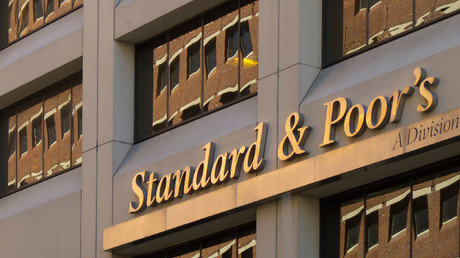Publisher: Maaal International Media Company
License: 465734
After Moody’s decision, Standard & Poor’s downgrades US banks
اقرأ المزيد
Two weeks after Moody’s Investors Service rattled financial stocks by downgrading the ratings of a slew of US banks, ratings agency Standard & Poor’s downgraded their ratings and downgraded its outlook for several more – citing a similar mix of pressures that make life difficult. Difficult for lenders…
And according to “Al-Arabiya”, “Standard & Poor’s” agency said on Monday in a statement that it had lowered its credit scores by one degree for KeyCorp, Comerica, Valley National, UMB Financial and Associated Banc-Corp banks. , pointing to the impact of higher interest rates and deposit movements across the industry
Standard & Poor’s also lowered its outlook for “River City Bank” and “S&T” bank to negative, and said that its view of “Zions Bancorp” remains negative after the review.
And Standard & Poor’s wrote in a note summarizing the moves that many depositors “have shifted their money into higher-interest accounts, which has led to an increase in banks’ financing costs.” “The decrease in deposits has led to liquidity pressure in many banks, while the value of their securities – which constitute a large part of their liquidity – has decreased,” according to “Bloomberg”, and Al Arabiya.net viewed it.
This comes after Moody’s downgraded the credit rating of 10 US banks earlier this month and warned that it might downgrade other banks as part of a comprehensive look at the growing pressures on the industry.
KBW’s index of major US banks has since fallen nearly 7% – heading for its worst monthly performance since the collapse of 3 regional banks in March triggered a broad sell-off.
The Fed’s wave of rate hikes has put pressure on many small and midsize banks that for years have paid too little to attract customer deposits that fund loans and other assets on their balance sheets. Consumers and businesses now have more opportunities to earn higher returns elsewhere. This has led to a 23% decline in interest-bearing deposits in the past five quarters, according to Standard & Poor’s.
With cash out, banks can either replace it with more expensive forms of financing, such as intermediary deposits, or shrink their balance sheets by selling off assets that were built in a lower interest rate environment – holding losses on those that have depreciated in value.
In both cases, profits are eroded.
It is widely expected that these pressures will push more banks to merge into deals aimed at supporting their financial resources.
S&P said the federally insured banks were posting unrealized losses of more than $550 billion on their available-for-sale and held-to-maturity securities through the middle of the year.
Looking ahead, the situation could get worse for banks if the Fed keeps interest rates higher for longer than previously expected – further eroding the value of loans for borrowers who need to refinance.
“While many measures of asset quality still look benign, high interest rates are putting pressure on borrowers,” S&P wrote. “Banks with physical exposure to commercial real estate, particularly in office loans, can see some of the greatest stress.









